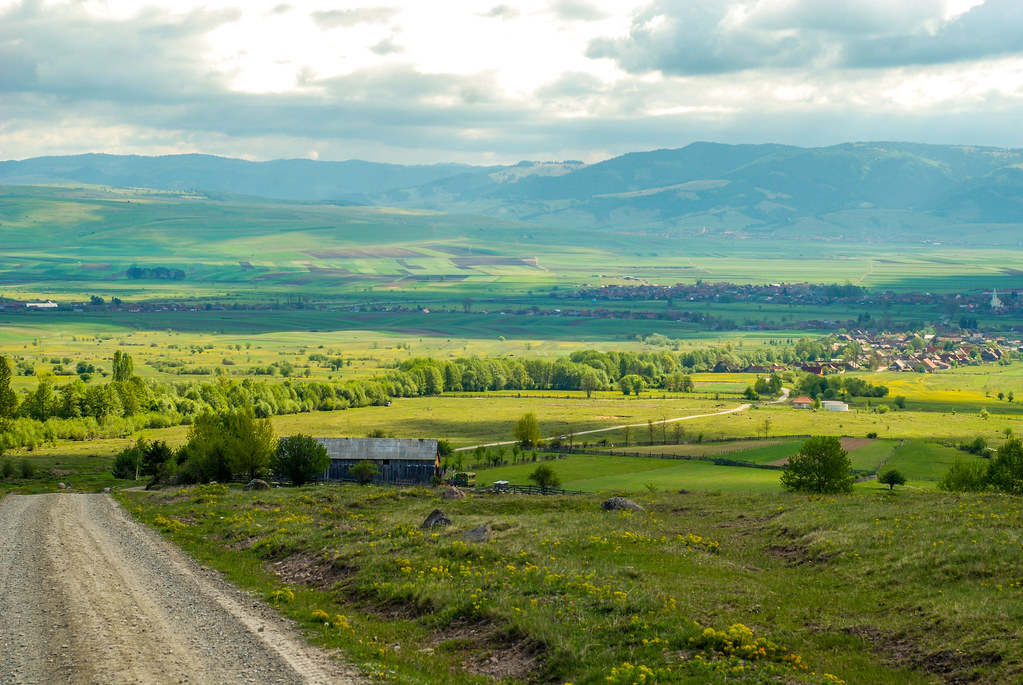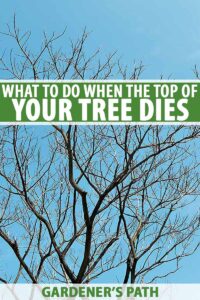Trees To Plant In Your Front Yard

There’s something inviting in the lush canopy of a tree in your front yard. It welcomes you and your guests, leads you to your front door, and also provides shade and comfort during hot summer seasons. Planting trees serve an even greater purpose. One fully grown tree can absorb as much than 48 pounds of carbon dioxide each years.
The tree you choose to use for the front yard landscaping creates an impression about your personality and also adds an attractive curb appeal to your home. As per the USDA Forest Service trees that are healthy can contribute about 10 percent to a home’s value. The Council of Tree and Landscape Appraisers states that mature trees can be appraised at between $1000 to $10,000.
How do you select the perfect tree to plant in your front yard and then prepare it for its long-term well-being for your home?
It all starts with careful planning, according to Dave Leonard, International Society of Arboriculture (ISA) Board Certified Master Arborist and the owner of Dave Leonard Tree Specialists. “There’s much more involved in planting trees than what the average person is aware of.”
Selecting and the planting of the tree you want to plant for your front yard is a studying local ordinances and tree planting, as well as the development and behavior of various kinds of trees, as well as how they will impact your property as well as the land surrounding it.
What kinds of trees should you Take into consideration?
Tree types: “Large deciduous trees benefit homes the most, however they depend on many aspects,” says Leonard. The front yard tree must be attractive from the viewpoint of the street, however it shouldn’t overpower the home it self. Large shade trees can lower energy costs by up to 50% annually, through cooling the house during the summer and allowing for a breeze during the winter months.
When compared to larger trees, smaller trees and dwarf trees may cost less as their smaller mature heights will help protect them from damage caused by branches that are overhanging. They may also have vibrant blossoms or interesting branch patterns that enhance the aesthetic of the landscaping.
8 Questions on Tree Selection
- What is the ideal tree’s size? is it wide or tall? tree get?
- What shape of tree do you prefer -either round or oblong shorter or tall?
- Do I need to plant a deciduous tree , or an evergreen tree?
- How fast will it grow?
- What is the average lifespan of this kind of tree normally last?
- What do they need for sun light, soil or water?
- Does it bear fruit or do I need to provide maintenance that I do not want to offer?
- Will it thrive within my USDA zone of hardiness?
One Tree Vs. The Grouping of Many
A beautiful specimen tree could make a statement in your garden. Group tree plantings can become an important focal point, frame the landscape. or define a space. Leonard suggests mixing the slow-growing and fast-growing plants to create a staggered tree life span. “Fast-growing trees tend to be fragile and have fewer limbs, whereas slow-growing trees do not.”
A rate of development typically is the height at which the tree grows and not the width it gets. The rate may vary from tree to tree based on the health of the soil, drainage and light, among other aspects. Slow growth is when the tree is growing less than 12 inches each year, while moderate growth is 13-24 inches annually and fast growth is growth of 25 inches or more per year as per the Arbor Day Foundation.
Trees to Think About
The front yard tree options are:
Slow-Growing Trees
- Black Tupelo (Nyssa Sylvatica) Slow to medium growth. The leaves in autumn can change to various shades of yellow, red, orange, or purplemultiple colors can appear on the same tree. Zones 4-9.
- Crabapple (Malus) A slow-growing variety of the crabapple. The crabapple variety known as”Sargent “Sargent” is among the most slow-growing crabapples. It is easy to prune to the desired height. It is a tiny red fruit in the autumn. Zones 3-9.
- Japanese Maple (Acer palmatum) is a slow-growing tree. There are many kinds of Japanese maples have burgundy leaves which change to crimson in autumn. Zones 5-8.
- snow Fountains Weeping Cherry (Prunus x Snofozam) It is a slow-growing plant. The hanging branches or “weeping” branches are covered with white blossoms in spring. Zones 4-8.
Medium-Growing Trees
- American Redbud (Cercis canadensis) Medium growth. Flowers are pink in the month of April. Zones 4-9.
- Eskimo Sunset Sycamore Maple (Acer pseudoplatanus ‘Esk Sunset’): Medium growth. The new leaves are pinkish-orange. They mature to color-splashed, green with red on the abaxial edge on the leaf. Zones 5-8.
- Fox Valley Dwarf River Birch (Betula nigra ‘Little King’): Medium growth. Small, with pretty exfoliating bark. Zones 4 to 10.
- Ivory Halo Dogwood (Cornus alba ‘Bailhalo’): Medium growth. White and creamy green variegated leaves. Zones 3 to 7.
- Smoke Tree (Cotinus coggygria). Medium growth. The small tree is adorned with tiny seed clusters that change dark grey or smoky pink during the summer. Zones 5-8.
- Thundercloud Purple Leaf Plum (Prunus cerasifera ‘Thundercloud) Medium growth. Burgundy to purple foliage and pink flowers in spring. They then turn into edible red fruit. Zones 4-9.
Medium-Fast-Growing Trees
- Red Maple (Acer rubrum) Medium to rapid growth. New leaves are red-trimmed . They change to green before turning yellow or dark red in the autumn. Zones 5-9.
- dwarf Alberta Spruce (Picea glauca “Conica”) Medium to rapid growth, however this evergreen will only be 4′-5 inches tall when mature. Zones 2-6.
Fast-growing Trees
- Cleveland Select Flowering Pear Tree (Pyrus calleryana “Cleveland Select”) A fast-growing tree. It is a bluish-colored fruit that matures in the fall, especially in the beginning of autumn. Leaves change colors between bright red to yellow in the autumn. Zones 4-9.
- Pin Oak (Quercus palustris): Fast growth. Leaves change to a russet color in the autumn. Zones 4-8.
- Tuliptree (Liriodendron tulipifera) Fast growth. Flowers that smell sweet and fragrant. Leaves turn yellow in autumn. Zones 4-9.
Which Trees to Put on the Front Yard
You know the type of tree you’d like to have and the rate at which you’re able to expect it to increase. After a few last checks, you’ll be able to start planting the tree of your dreams..
Make sure you have the proper permits, utilities and Restrictions
Contact your local zoning departments to determine whether there are plant or tree varieties restrictions. You might need to contact water, gas or other utilities to find underground utility cables, lines, or pipes or for advice on power lines. Be aware of the location of your property lines and ensure that the tree that is mature won’t grow onto the land of your neighbors. Request permits when needed.
Size and Type of Soil
“Planting space size is crucial to the lifespan for the trees, along with the soil kind,” advises Leonard. “This is vitally important. Consider overhead and underground water and site water clearance requirements, and undesirable fruit, like big Acorns, messy fruits, and slope. Jim Urban stressed soil volume in his highly recommended book, ‘Up by Roots.’ Growing Up with roots.'”
How Bugs Trees in Your Area?
“Know the diseases and insects in the region,” warns Leonard. “Emerald Ash borer has destroyed the urban forests of our eastern region and is spreading towards the west and south. There are numerous other issues. Always be aware of the species of trees in your city, as we do not want to have to have too many species of the same. The decline of Ash trees has greatly negatively affected the overall health of many, and cities have lost large amounts of these trees.”
Plant with the Sun in Your Mind
Which direction is your front yard facing? The tree will block the winter sun or let it provide some shade in summer? Are the big trees blocking sunlight from the vegetable gardens or flower beds? The answers to these questions will affect the location of trees. “In Northern hemisphere,, it is recommended to put deciduous plants along the southwest corner of your home,” says Leonard. “If it’s windy, you could use evergreens as an air break or screen.”
Step away from the foundation
When planting trees, be sure to select a location that is at a minimum of 15 feet away from your home to avoid issues in the form of roots or branches that hang over the house. Consider the size that matures and the size of any tree you’ve got in mind. For instance, a tree that has a spread-out root system may have to be placed further from the home. It is also possible to select a one that’s not as disruptive or has a lower canopy. It is important to take the health of your soil into consideration too. The soil that is heavy in clay can cause the growth of more roots on an area of soil which could cause problems.
The Birds as well as the Bees
Then, but not last, the tree you select could be a place of refuge for wildlife and birds as well as the pollen and flowers will assist the local pollinator population. A well-chosen tree could be a huge difference!

